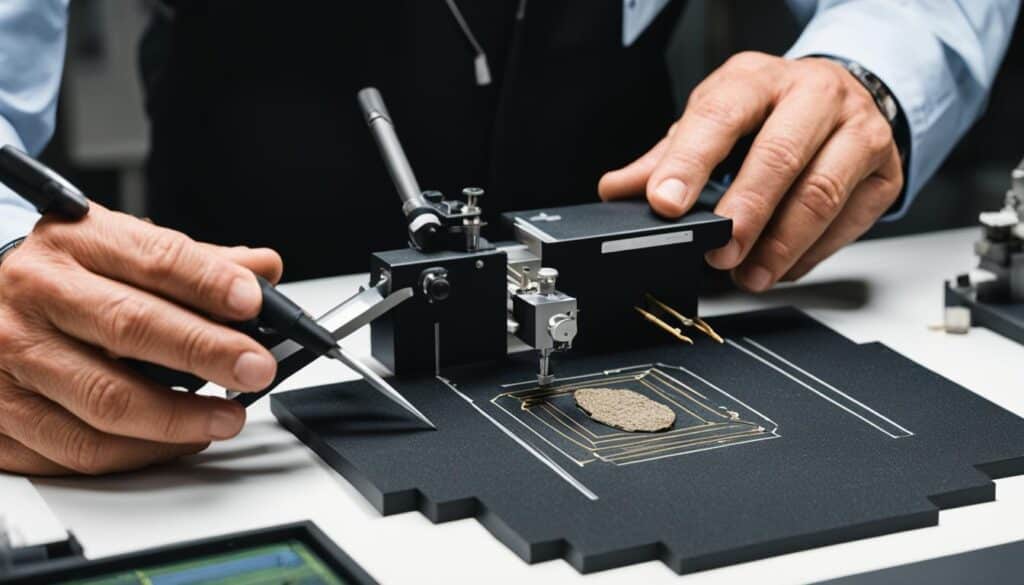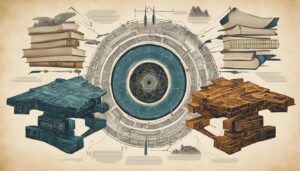
Carbon dating is a scientific method used to determine the age of artifacts and archaeological sites by measuring the amount of carbon-14 present in organic materials. By integrating advanced carbon dating methods into biblical era research, researchers can uncover historical truths and establish accurate timelines for events in ancient history. This article explores the importance of advanced carbon dating in biblical era research and its impact on understanding the past.
Key Takeaways:
- Advanced carbon dating provides more accurate dating possibilities in biblical era research.
- By establishing precise timelines for historical events, carbon dating helps contextualize artifacts within their historical context.
- Advancements in carbon dating technology, such as Accelerator Mass Spectrometry, have improved accuracy and expanded the range of dates that can be reliably calculated.
- Case studies have demonstrated the valuable insights that advanced carbon dating can provide in uncovering historical revelations.
- The integration of advanced carbon dating methods contributes to a more comprehensive understanding of biblical era events and timelines.
The Significance of Advanced Carbon Dating
Advanced carbon dating methods are of utmost significance in the realm of biblical era research. These methods provide highly accurate dating possibilities, surpassing traditional approaches, and enabling researchers to establish precise timelines for historical events. By employing advanced carbon dating techniques, scientists can determine the age of organic materials found at archaeological sites, thus facilitating the contextualization of artifacts within their historical context.
This precise dating accuracy caters to a deeper understanding of ancient societies and their interactions. It allows historians to shed light on historical milestones and cultural developments, unraveling the intricacies of the past. Through advanced carbon dating, experts can elucidate the sequence of events and uncover critical insights into the civilizations that have shaped our world today.
Unearthing the Truth through Accurate Dating Methods
Carbon dating has revolutionized archaeological research, particularly in the biblical era. This groundbreaking technique offers a scientifically valid means to date organic materials such as bones, charcoal, and wood remains. By analyzing the ratio of carbon-14 isotopes present in these artifacts, scientists can estimate the time elapsed since their formation.
Carbon dating allows us to bridge the gap between artifacts and human history. It is a powerful tool that provides solid evidence for the authenticity and dating of archaeological discoveries.
Accurate dating methods are fundamental to establishing a chronological framework for historical events, creating a timeline that aligns with biblical narratives and other historical records. This integration of archaeological findings with carbon dating allows researchers to piece together a comprehensive picture of the past, resulting in a more accurate understanding of ancient civilizations and their legacy.
Moreover, advanced carbon dating methods can confirm or dispel assertions made in works of literature, religious texts, or legends. By comparing the dating results with the historical context described in such sources, researchers can validate or challenge the authenticity of events and gain new insights into the distant past.
Archaeological Discoveries Enhanced by Carbon Dating
The precision offered by advanced carbon dating methods has significantly impacted our understanding of archaeological discoveries. By accurately dating artifacts and archaeological sites, researchers can attribute them to specific time periods, enabling the reconstruction of ancient societies and the tracing of cultural and technological developments.
For example, the use of carbon dating in excavations of ancient Egyptian tombs has allowed experts to accurately date various artifacts and mummies, shedding light on the lives and burial practices of this ancient civilization. Carbon dating also plays a crucial role in dating historical sites and artifacts related to biblical figures and events, such as the city of Jericho or the Dead Sea Scrolls.
Through these archaeological discoveries, researchers can paint a more vivid and accurate picture of past civilizations, confirming or challenging existing historical records and uncovering hidden stories from the depths of time.
| Benefit | Description |
|---|---|
| Accurate dating | Precise estimation of the age of artifacts and archaeological sites. |
| Contextualization | Enabling a deeper understanding of historical events by placing artifacts within their historical context. |
| Corroboration | Validating or challenging historical records and narratives through carbon dating results. |
| Reconstruction | Tracing the cultural, technological, and societal developments of ancient civilizations through accurate dating. |
Advancements in Carbon Dating Technology
Advancements in carbon dating technology have greatly improved the accuracy and reliability of dating methods, allowing for a deeper understanding of ancient history. These technological innovations have expanded the range of dates that can be accurately calculated, providing researchers with more precise results.
One significant advancement in carbon dating is the use of Accelerator Mass Spectrometry (AMS). This method can measure even smaller amounts of carbon-14, enabling scientists to obtain more precise measurements. By analyzing these measurements, researchers can determine the age of organic materials with greater accuracy.
Another important development is the creation of calibration curves. These curves allow scientists to account for fluctuations in atmospheric carbon-14 levels over time. By comparing the measured carbon-14 levels of a sample with the calibration curve, researchers can determine the exact age of the sample.
This advancement in carbon dating technology has had a significant impact on biblical era research. The ability to measure smaller amounts of carbon-14 and the use of calibration curves have enhanced the accuracy of dating methods in this field. As a result, researchers can establish more precise timelines for historical events and gain a deeper understanding of ancient civilizations.

Advancements in Carbon Dating Technology Table
| Advancement | Description |
|---|---|
| Accelerator Mass Spectrometry (AMS) | A method that can measure smaller amounts of carbon-14, providing more precise results. |
| Calibration Curves | Curves that allow scientists to account for fluctuations in atmospheric carbon-14 levels over time, enhancing the accuracy of carbon dating. |
Case Studies and Findings
Several case studies have demonstrated the valuable insights that advanced carbon dating can provide in biblical era research. By accurately dating materials from significant archaeological sites and religious texts, researchers have made historical revelations that shed light on the past.
An example of such a case study is the dating of materials from the ancient city of Jericho. Through advanced carbon dating methods, scientists have determined a timeline that aligns with the biblical accounts of the city’s destruction. This finding not only provides evidence for the historical accuracy of biblical narratives but also offers a deeper understanding of the events that shaped ancient civilizations.
Another notable case study is the dating of materials from the Dead Sea Scrolls. Carbon dating has revealed crucial information about the timeframe in which these significant religious texts were written. By establishing the age of the materials, historians can better comprehend the cultural and historical context in which the Dead Sea Scrolls emerged, leading to a more comprehensive understanding of the era.
These case studies highlight the power of advanced carbon dating methods in unraveling historical mysteries and corroborating biblical narratives. By providing accurate dating evidence, carbon dating contributes to the construction of reliable historical timelines and the validation of ancient texts.

Conclusion
In conclusion, the integration of advanced carbon dating methods in biblical era research has revolutionized our understanding of ancient history. The ability to accurately date artifacts and archaeological sites provides valuable evidence to support historical claims and contributes to a more comprehensive understanding of the past.
By combining advanced carbon dating with other archaeological and historical methods, researchers can piece together a more accurate and nuanced picture of biblical era events and timelines. This approach allows for a deeper exploration of the historical accuracy of biblical accounts, shedding light on the rich tapestry of human history.
The advancements in carbon dating technology, such as the use of Accelerator Mass Spectrometry and calibration curves, have further enhanced the accuracy and reliability of carbon dating in biblical era research. These technological innovations enable researchers to navigate through historical timelines with confidence, ensuring that their findings are supported by robust scientific evidence.
Overall, advanced carbon dating has become an indispensable tool in unraveling historical mysteries and shedding light on the past. As the field of biblical studies continues to evolve, the integration of advanced carbon dating methods will play a pivotal role in deepening our understanding of the biblical era and the historical events that shaped it.
FAQ
How does carbon dating contribute to biblical era research?
Carbon dating plays a crucial role in biblical era research by providing more accurate dating possibilities and establishing precise timelines for historical events. It allows researchers to date organic materials found at archaeological sites and contextualize artifacts within their historical context, leading to a deeper understanding of ancient societies and their interactions.
What advancements have been made in carbon dating technology?
Over the years, advancements in carbon dating technology have improved accuracy and expanded the range of dates that can be reliably calculated. One notable advancement is the use of Accelerator Mass Spectrometry (AMS), which can measure even smaller amounts of carbon-14 and provide more precise results. Calibration curves have also been developed to account for fluctuations in atmospheric carbon-14 levels over time, further enhancing the accuracy of carbon dating in biblical era research.
Can you provide examples of how carbon dating has been used in biblical era research?
Certainly! Carbon dating has been used in several case studies, yielding valuable insights. For instance, the dating of materials from the ancient city of Jericho has revealed a timeline that aligns with the biblical accounts of its destruction. Additionally, the dating of materials from the Dead Sea Scrolls has provided valuable information about the timeframe in which these significant religious texts were written. These findings highlight the power of advanced carbon dating methods in unraveling historical mysteries and corroborating biblical narratives.
How does the integration of advanced carbon dating methods revolutionize our understanding of ancient history?
The integration of advanced carbon dating methods in biblical era research revolutionizes our understanding of ancient history by providing accurate dating of artifacts and archaeological sites. This dating evidence supports historical claims and contributes to a more comprehensive understanding of the past. By combining advanced carbon dating with other archaeological and historical methods, researchers can piece together a more accurate and nuanced picture of biblical era events and timelines, shaping the field of biblical studies and shedding light on the rich tapestry of human history.








